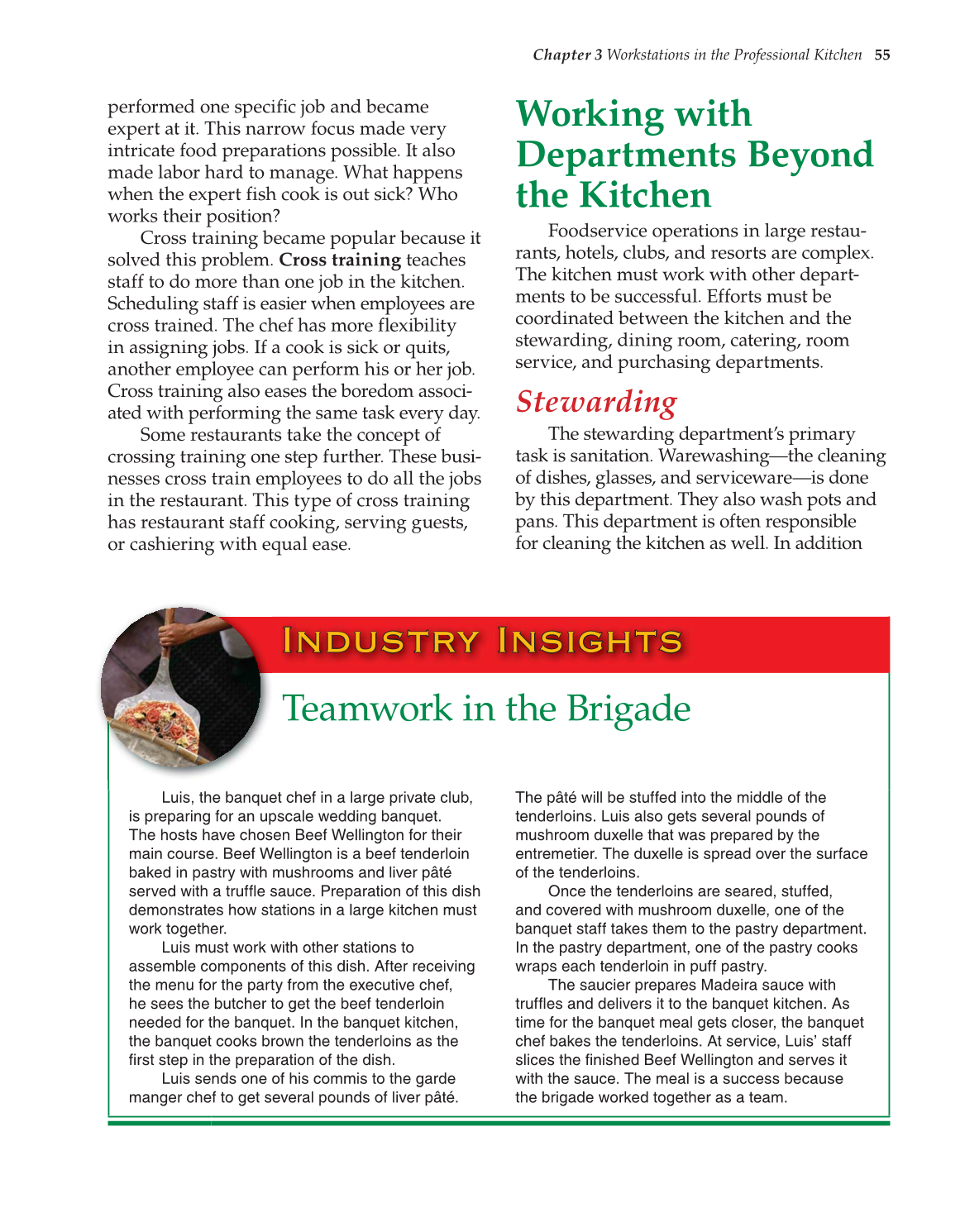Chapter 3 Workstations in the Professional Kitchen 55
performed one specific job and became
expert at it. This narrow focus made very
intricate food preparations possible. It also
made labor hard to manage. What happens
when the expert fish cook is out sick? Who
works their position?
Cross training became popular because it
solved this problem. Cross training teaches
staff to do more than one job in the kitchen.
Scheduling staff is easier when employees are
cross trained. The chef has more flexibility
in assigning jobs. If a cook is sick or quits,
another employee can perform his or her job.
Cross training also eases the boredom associ-
ated with performing the same task every day.
Some restaurants take the concept of
crossing training one step further. These busi-
nesses cross train employees to do all the jobs
in the restaurant. This type of cross training
has restaurant staff cooking, serving guests,
or cashiering with equal ease.
Working with
Departments Beyond
the Kitchen
Foodservice operations in large restau-
rants, hotels, clubs, and resorts are complex.
The kitchen must work with other depart-
ments to be successful. Efforts must be
coordinated between the kitchen and the
stewarding, dining room, catering, room
service, and purchasing departments.
Stewarding
The stewarding department’s primary
task is sanitation. Warewashing—the cleaning
of dishes, glasses, and serviceware—is done
by this department. They also wash pots and
pans. This department is often responsible
for cleaning the kitchen as well. In addition
Teamwork in the Brigade
Luis, the banquet chef in a large private club,
is preparing for an upscale wedding banquet.
The hosts have chosen Beef Wellington for their
main course. Beef Wellington is a beef tenderloin
baked in pastry with mushrooms and liver pâté
served with a truffl e sauce. Preparation of this dish
demonstrates how stations in a large kitchen must
work together.
Luis must work with other stations to
assemble components of this dish. After receiving
the menu for the party from the executive chef,
he sees the butcher to get the beef tenderloin
needed for the banquet. In the banquet kitchen,
the banquet cooks brown the tenderloins as the
fi rst step in the preparation of the dish.
Luis sends one of his commis to the garde
manger chef to get several pounds of liver pâté.
The pâté will be stuffed into the middle of the
tenderloins. Luis also gets several pounds of
mushroom duxelle that was prepared by the
entremetier. The duxelle is spread over the surface
of the tenderloins.
Once the tenderloins are seared, stuffed,
and covered with mushroom duxelle, one of the
banquet staff takes them to the pastry department.
In the pastry department, one of the pastry cooks
wraps each tenderloin in puff pastry.
The saucier prepares Madeira sauce with
truffl es and delivers it to the banquet kitchen. As
time for the banquet meal gets closer, the banquet
chef bakes the tenderloins. At service, Luis’ staff
slices the fi nished Beef Wellington and serves it
with the sauce. The meal is a success because
the brigade worked together as a team.
Industry Insights Industry Insights
